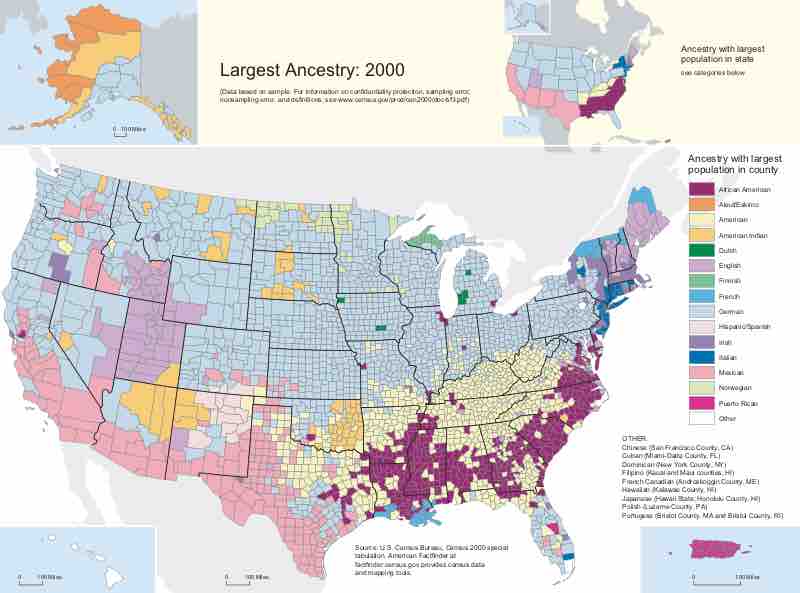The United States is a diverse country, racially and ethnically. Six races are officially recognized: white, American Indian and Alaska Native, Asian, black or African American, Native Hawaiian and other Pacific Islander, and people of two or more races. A race called, "Some other race," is also used in the census and other surveys but is not official.
The United States Census Bureau also classifies Americans as "Hispanic or Latino" and "Not Hispanic or Latino," which identifies Hispanic and Latino Americans as a racially diverse ethnicity that composes the largest minority group in the nation.
History
The immigrants to the New World of the Americas came largely from ethnically diverse regions of the European Old World. In the Americas, the immigrant populations began to mix among themselves and with the indigenous inhabitants of the continent, as well as the enslaved Africans.
From the beginning of U.S. history, Native Americans, African Americans, and European Americans were classified as belonging to different races. For nearly three centuries, the criteria for membership in these groups were similar, comprising a person's appearance, their fraction of known non-European ancestry and their social circle. This changed in the late nineteenth century.
Throughout the post-Civil War Reconstruction era, in an effort to restore white supremacy in the South after the emancipation of slaves, the ruling white majority began to classify anyone considered to have "one drop" of "black blood," or any known African ancestry, to be "black." In most southern states, this definition was not put into law until the twentieth century. Many local governments established racial segregation of facilities during what came to be known as the Jim Crow era, which began in the late 1800s.
In the twentieth century, efforts to sort the increasingly mixed population of the United States into discrete categories generated many difficulties for the U.S. government (Spickard, 1992). By the standards used in past censuses, many millions of mixed-race children born in the United States have been classified as of a different race than one of their biological parents. Efforts to track mixing between groups led to a proliferation of categories (such as "mulatto" and "octoroon") and so-called "blood quantum" distinctions, which refers to the degree of ancestry for an individual of a specific racial or ethnic group (e.g., saying someone is "1/4 Omaha tribe").
These various distinctions became increasingly untethered from self-reported ancestry. Further complicating this fact is that a person's racial identity can change over time, and self-ascribed race can differ from assigned race (Kressin et al., 2003).
Current Official Definitions of Race and Ethnicity
Aside from their varied social, culture, and political connotations, the idea of racial groups have been used in U.S. censuses as self-identification data items in which residents choose the race or, starting with the 2000 US Census, races with which they most closely identify. Respondents also indicate whether or not they are of Hispanic or Latino origin, which the census considers separately from race. While many see race and ethnicity as the same thing, ethnicity generally refers to a group of people whose members identify with each other through a common heritage and culture, as opposed to the implication of shared biological traits associated with the term "race."

The American Public by Ancestry, 2000
Especially in the southwest United States, people of Latino origin make up a significant proportion of United States residents.
These categories, therefore, represent a social-political construct for the race or races that respondents consider themselves to be and "generally reflect a social definition of race recognized in this country. " The concept of race, as outlined for the U.S. Census, has been described as not "scientific or anthropological" and takes into account "social and cultural characteristics as well as ancestry," using "appropriate scientific methodologies" that are not "primarily biological or genetic in reference. " The race categories include both racial and national-origin groups.